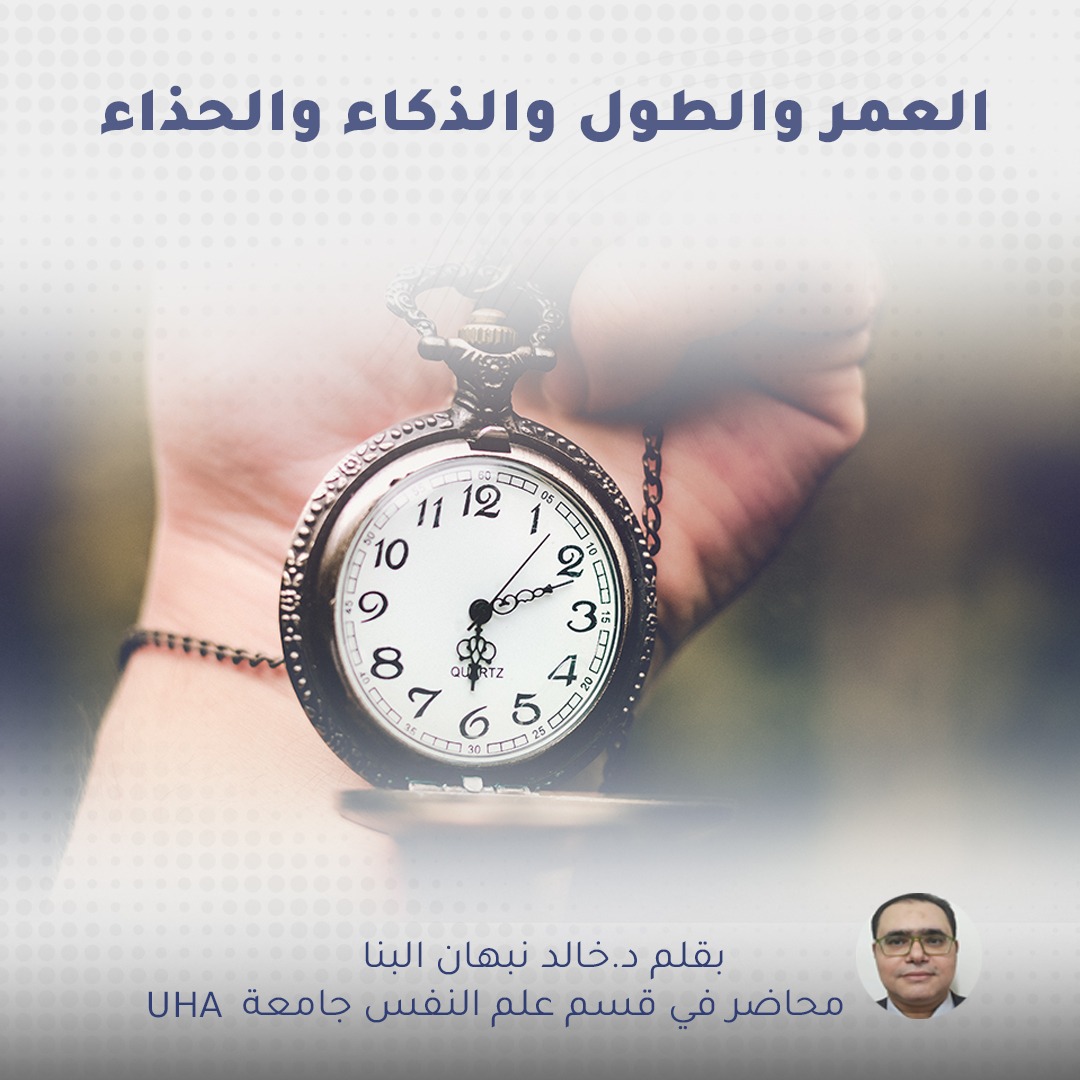
Age, height, intelligence, and shoes
2 months ago
بقلم : Dr. Khaled Nabhan Al-Banna
Dear Colleagues,
A question often arises about the concept of “mental age.” Can it still be relied upon, especially in assessment processes or interventions?
In the following article and lines, we attempt to provide some possible answers to this question, with reference to some scientific sources.
A Simple Story
At first glance, it may seem that there is a correlation between a child’s shoe size and level of intelligence, especially in the early years, since the shoe size increases as well as intelligence or thinking.
(Note: this story is adapted from a famous example in research methodology books, mentioned by Parker and others).
But the truth is that there is no relationship between them. All that happens is that as the child grows older, all these aspects increase together (shoe size, level of thinking or intelligence, where intelligence here refers to the ability to learn and solve problems).
Continuing the story, a child’s height also increases with age. There are benchmarks that show that children at the age of 5 have heights ranging between certain values, and at age 10 between other values (you can check age-appropriate heights on any specialized medical website).
Then height stabilizes at a certain age, ranging between 16 and 20 years approximately.
As for intelligence, the situation is somewhat different.
Measuring Intelligence
IQ is measured according to a specific benchmark: comparing the individual’s performance, regardless of age, with the average performance of the normative sample of the same chronological age.
Therefore, a child who scores an IQ of 100 (more accurately, within a confidence interval such as between X and Y—this requires another discussion) will most likely, unless something significant happens (such as an accident or illness), maintain the same score in normal life when tested during adolescence, adulthood, and even old age. It will remain 100.
This is because in all cases, we compare the score at each age with the average of peers of the same age.
Thus, the concept of mental age was replaced years ago with the concept of deviation IQ (standard IQ).
This shift was made for scientific reasons, as the concept of mental age is misleading at older ages.
It may have some meaning and limited usefulness as a way of clarification or simplification in early ages up to 10, or 15, or at most 18 years. As Foad Abu Hatab and others (2008) indicated, the benefit of mental age is limited to children, where it has developmental implications. But when it comes to adults, it is inaccurate, especially in normal or gifted individuals. In such cases, other types of standards must be used, excluding mental age.
Beyond this, it has no value and is misleading.
The simple reason is that the correlation between age and intelligence is curvilinear, not linear.
Conclusion
The best approach is standardized IQ, as it compares the examinee’s performance with the normative sample of peers of the same age.
Imagine an adult aged 37 being told that their mental age is 20 or 22 years, just because some theories suggest that intellectual development plateaus between 16 and 22 years at most.
For this reason, modern intelligence scales—beginning with Binet IV in 1986—gradually abandoned the concept of mental age. Deviation IQ was introduced with Wechsler’s first edition in 1939. Terman began using it with the Binet revision in 1960, while still retaining the concept of mental age for historical reasons and familiarity among Binet test users (as Safwat Farag, 2012, pointed out). Similarly, Roid, in the Stanford-Binet 5 Examiner’s Manual (Arabic translation, 2011), noted the limitations of age-equivalent measures, especially when comparing their use with young ages versus older ages.
Instead, standardized IQ scores are used for total and subscale scores, along with different types of standard scores such as scaled or percentile ranks, which provide possibilities for comparison and intervention.
As Hargrove and Poteet (2013) noted in their book, diagnosticians should not use age scores (mental age) whenever possible, but instead rely on more precise statistical scores. This aligns with the recommendations of the joint committee of the American Psychological Association, the American Educational Research Association, and the National Council on Measurement in Education, which emphasized that the best types of scores are percentiles and standardized scores, while mental ages and grade equivalents should be avoided.
In Brief
-
Mental age cannot and should not be used with older ages.
-
Its usefulness is weak even in younger ages.
Suggested References
-
Safwat Farag – Psychological Measurement
-
Foad Abu Hatab et al. – Psychological Assessment
-
Hargrove & Poteet – Assessment in Special Education and Educational Evaluation
-
Roid – Stanford-Binet Intelligence Scales, Fifth Edition: Examiner’s Manual
-
Parker et al. – Research Methods in Clinical and Counseling Psychology

